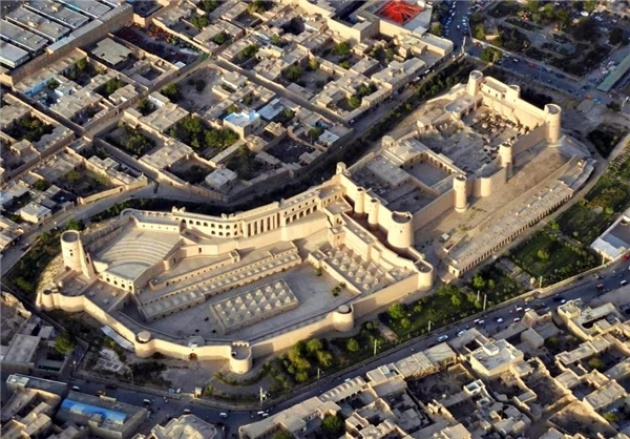Ancient and Cultural Centers
Herat National Museum
The National Heritage Museum and Archives, said to be 90 years old, was reopened after three decades.
With the reopening of the Herat National Museum and Arashif, those interested in artefacts will be able to enjoy this historic treasure.
Herat's governor, who had participated in the opening of the National Museum, said: "The Herat Museum, with its 90-year history, presents a treasure trove of historical and cultural memories of the Afghan people in public.
Emphasizing the preservation and preservation of this precious treasure, Daud Shah Saba said: "This precious treasure trove has been restored in one of Herat's treasures, a historic citadel after many wanderings.
The governor of Herat welcomed the citizens of this unique treasure, adding: Herat National Museum is the only museum in the world that is housed in the oldest monument in the world.
Doctoring emphasized that Herat Information and Culture Department officials should encourage programs for people to visit this museum: Visitors to this cultural center are familiar with their past and their proud history.
The Herat Museum was founded in 1302, when Shuja al-Dawlah was in charge of King Amanullah during the reign of Herat, direct by the Shah himself, who was then governed by the administration itself.
After the fall of the Amani government, during the reign of Habibullah Kolkani, the museum was rebuilt, and in addition to the numerous relocated works, the seven-pen stone that had been moved from the gazebo to the museum was then returned to the gazebo near the tomb of Khwaja Abdullah Ansari. Rah) embedded and Digi Messi (Seven Welds) moved to Herat Grand Mosque.
In 1310 the Herat Museum was transferred to the municipality and in 1312 the sun was transferred to the new city hotel by the same administration as the new building and housed in the upper house of the hotel.
Most of the artifacts in the museum at that time were purchased from the municipality and funded by the city. In 1325 several pieces of Buddhist art were donated to the Herat Museum by the National Museum of Kabul.
In this museum, relics of Buddhism, Kushanism, and works of Islam from the time of the Ghaznavids, Ghoris, Timurids and so on were also kept.
In 1326, Herat Solar Museum received the Independent Press and in 1339 it was formally transferred to Education Management and its assets were transferred to Special Pen Management (Foreign Communication) adjacent to the Provincial Administrative Complex.
After the year 1340 when the museum was repaired by the Foreign Relations Manager and its display gate was closed to the public.
Nowadays, Herat Museum and Archives are located in the fortress of al-Din al-Erg, which is more than three thousand years old and is one of the oldest monuments in the world.
Fortunately, the museum was inaugurated last month with a ceremony attended by Dr Davood Shah Saba, Governor of Herat province and some government officials.
The museum has 498 pieces containing 2,500 pieces of antiquity dating back more than five years.
Although the National Museum of Herat has been ransacked many times over the past three decades, it is still one of the richest and most valuable historical treasures in the country and the region, located in Herat's oldest building.

Khawaja Abdullah Ansari
The pilgrimage of Khaje Abdullah Ansari, one of Herat's most ancient and cultural monuments, is one of the most exquisite engineering and artistic works of the Timurid era in Herat. Grouped as an engineering and historical work, it has unique characteristics. This complex includes the pilgrimage building of Khaje Abdullah Ansari (Pyrrhot), the Zarangar building and the saltwater building. Situated in the Gaza Strip and five kilometers northeast of Herat City, it is one of the most famous historical sites in Herat and is one of the most important shrines in the city. The word "gazette" literally means a washroom, which is said to have been used as a Sophisticated laundry site at the time, though some believe that the gazette was derived from the word "workshop" and that is why it is said in In the ninth century a bloody battle ensued, killing many people, whose bodies were buried in seven wells and seven poisoned places. This event over time gave the place to the clergy, which soon became a place of pilgrimage and sanctification. As mentioned above, this complex consists of three important historical sites, each of which is interrelated in terms of engineering and historical features of construction. It is said to have been the first construction of a school by Amir Azaddin Murghani during the reign of Sultan Ghiasuddin Muhammad Sam (1162-1202 AD), and there is still evidence that another building has existed since the Seljuk rule. The remains of Seljuk and Ghori buildings existed after the Mongol invasion of Genghis, which was later repaired and rebuilt by Timurid kings. Generally, a collection existed during the reign of the Timurid monarchs (fifteenth century AD) in Herat, and especially during the reign (Shahrokh Mirza Timur). In 1405 AD, when the emperor Timur left his great empire extending from Tabriz to Kabul, his capital was the city of Semsargh. Next the news spread of the death of his Timuridan, who ruled in different provinces, after years of conflict with his eldest son, Shah Rukh, overthrown and transferred his royal seat to Herat. During the first two decades of his rule, Shah Rukh worked on the construction and repair of the city's defensive walls as well as the creation of markets and roads.
